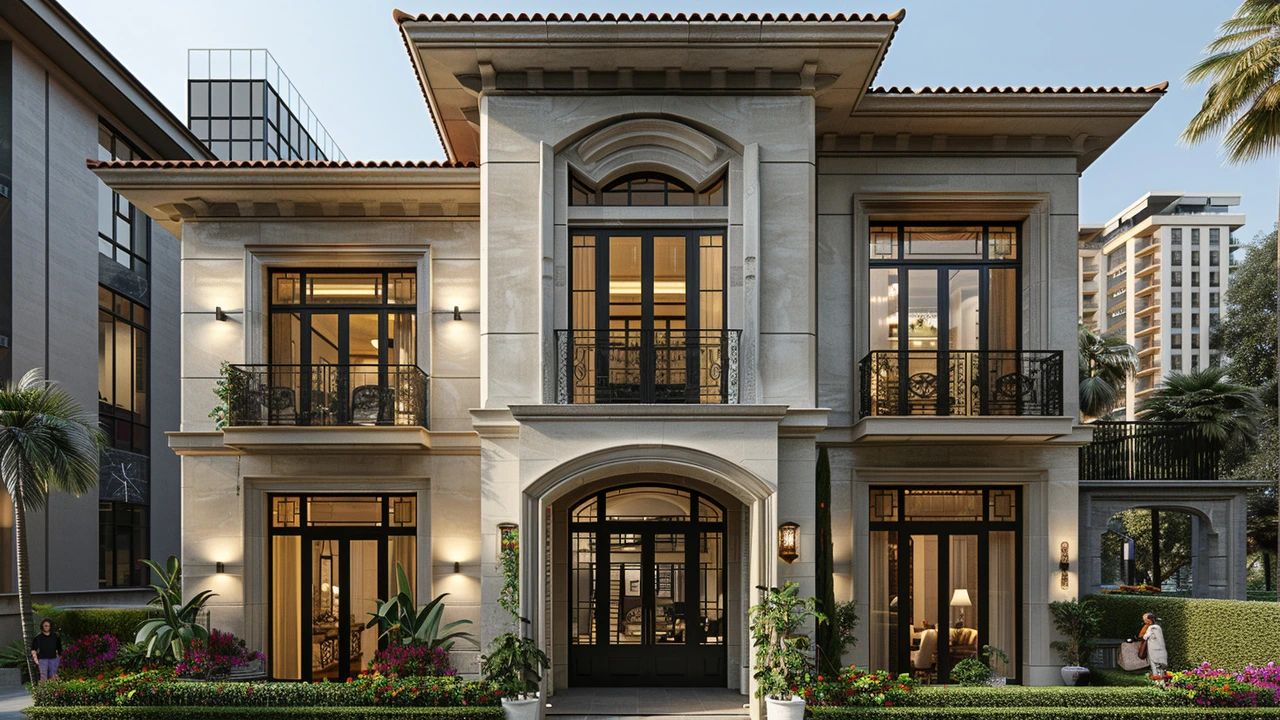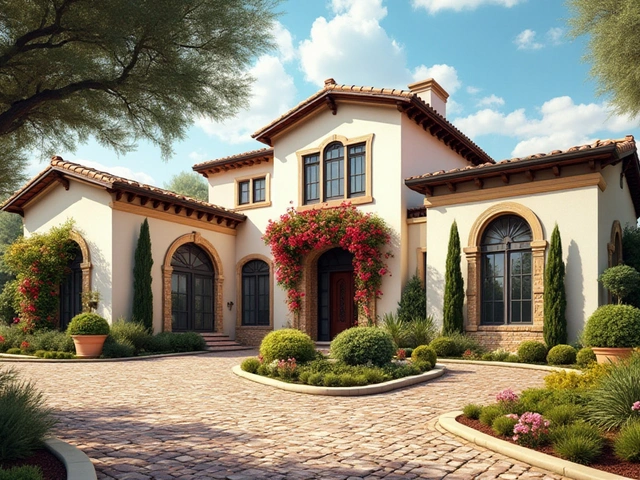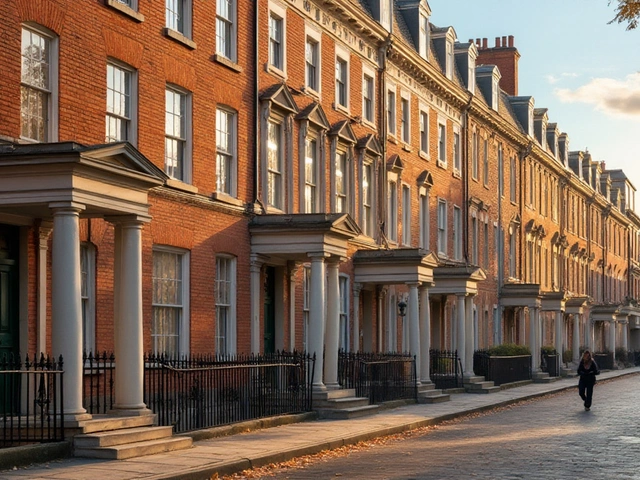Mediterranean Revival architecture paints a beautiful picture of sun-dappled terraces, lush courtyards, and a harmonious blend of function and artistry. Inspired by the warmth and vibrancy of Southern European locales, this architectural style has captured the imagination of designers and homeowners alike for its timeless aesthetics and practical comforts.
This style draws inspiration from the coastal regions of Spain, Italy, and Greece, blending a rich palette of materials and design techniques. It's not just about visual appeal; the style offers natural cooling properties and seamless indoor-outdoor integration, making it ideal for warmer climates. In this article, we explore what makes Mediterranean Revival a designer's dream and how you can bring a slice of the Mediterranean into your own home.
- History and Origin
- Distinctive Features
- Why Designers Love It
- Tips for Incorporating Mediterranean Revival
History and Origin
Mediterranean Revival architecture has an intriguing history that dates back to the early 20th century. Rooted in the warm, sun-soaked regions of Southern Europe, this style emerged primarily in the United States during the 1920s and 1930s. It was popularized by the desire to recreate the romantic, idyllic coastal villas of Spain, Italy, and Greece. Its emergence was perfectly timed with the burgeoning Hollywood film industry, which sought opulent and exotic settings for movies, and the rapidly growing tourism industry in Florida and California.
The style drew heavily from the Spanish Colonial Revival, Renaissance, and Beaux-Arts traditions, integrating elements like stucco walls, terracotta roofs, and arched doorways. The architecture also resonated well with the climate of the southwestern US, where the thick walls and shaded courtyards provided much-needed respite from the heat. Architects such as Bertram Goodhue and Addison Mizner played pivotal roles in bringing Mediterranean Revival to the forefront of American architecture. Mizner, in particular, left an indelible mark on Palm Beach, Florida, where his works still attract admiration and aspiring designers.
One significant hallmark of this architectural style is its adaptation to local landscapes and materials. The use of indigenous stone, wrought iron, and ceramics not only enhanced the visual appeal but also underscored sustainable building practices. Mediterranean Revival architecture emphasizes a seamless blend between indoor and outdoor living, with elements such as covered patios, loggias, and lush gardens designed to maximize natural light and ventilation.
The revival's appeal was not just limited to residential buildings. Many public structures, including hotels, resorts, and civic buildings, adopted the style, lending an air of rustic elegance and old-world charm. The iconic Biltmore Hotel in Coral Gables, Florida, designed by Leonard Schultze and S. Fullerton Weaver, stands as a testament to the grandeur and enduring allure of Mediterranean Revival architecture.
"Mediterranean Revival is a celebration of light, serenity, and the harmonious balance between nature and architecture," notes architectural historian Paul Goldberger. "Its appeal transcends time, effortlessly blending traditional aesthetics with contemporary needs."
The influence of Mediterranean Revival architecture continued to evolve throughout the 20th century and into the modern day. Its principles are now interwoven with modern design philosophies, allowing architects to create spaces that speak to both nostalgia and innovation. From luxurious seaside estates to humble courtyard homes, the style's versatility and charm make it an enduring favorite in the world of architecture and design.
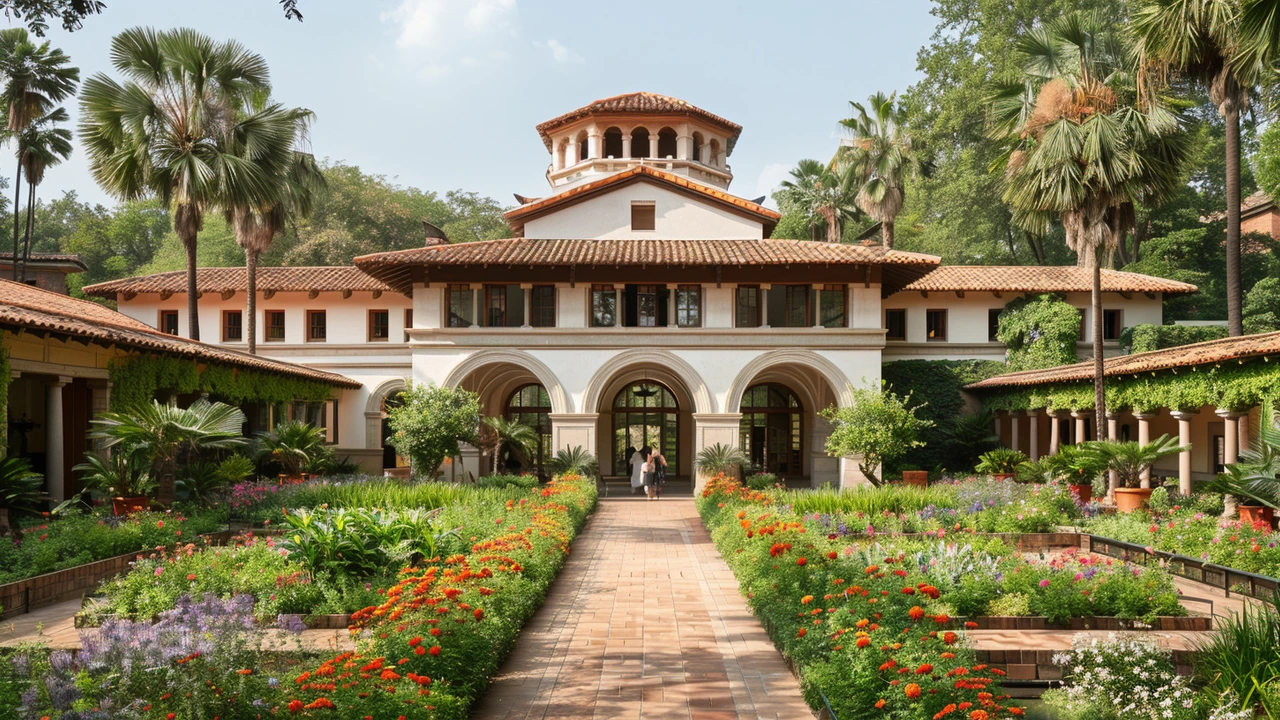
Distinctive Features
Mediterranean Revival architecture is recognized immediately by its charming and distinctive features that evoke a sense of sun-kissed elegance and timeless allure. This style, historically influenced by the coastal regions of Spain, Italy, and Greece, brings together a variety of elements that tell a story of warmth, history, and culture. Red-tiled roofs are one of the most iconic features, designed not only for their aesthetic appeal but also for their functionality in hot climates. The curved clay tiles help to keep buildings cool by allowing air to circulate under the tiles.
Another standout feature is the use of stucco walls and finishes. The texture and color of stucco, typically in earthy tones such as white, beige, and ochre, help to reflect sunlight and maintain a cooler interior climate. Stucco also complements the natural surroundings, creating a seamless blend between the building and its environment. Arched doorways and windows add to the romantic and inviting feel of Mediterranean Revival homes. These arches are not just stylistic; they also signify architecture that embraces light and space, enhancing the flow between indoor and outdoor living areas.
The incorporation of courtyards and outdoor living spaces is another hallmark of this style. Lush gardens, water features, and tiled walkways create serene retreats within the home’s footprint. These areas serve as extensions of the living spaces, making them perfect for entertaining or enjoying a quiet moment. The use of wrought iron in railings, window grilles, and light fixtures introduces a touch of craftsmanship and vintage flair. This material adds both decorative and functional value, contributing to the overall charm and elegance of the home.
Furthermore, the reliance on natural materials such as stone, terracotta, and wood highlights the deep connection to nature inherent in Mediterranean Revival architecture. These materials ensure that each home is unique, with variations in texture and color that bring authenticity and character. Additionally, these materials are chosen for their durability and ability to age gracefully, adding to the timeless appeal of the style.
It’s worth noting that the blend of these features creates a holistic and harmonious design that appeals to many.
As architect Robert A.M. Stern remarked, “Mediterranean Revival architecture is timeless; it speaks of a generosity of spirit and a deep respect for the art of building.”This style isn’t just about looks; it’s about creating spaces that enhance well-being and connectivity with the natural environment.
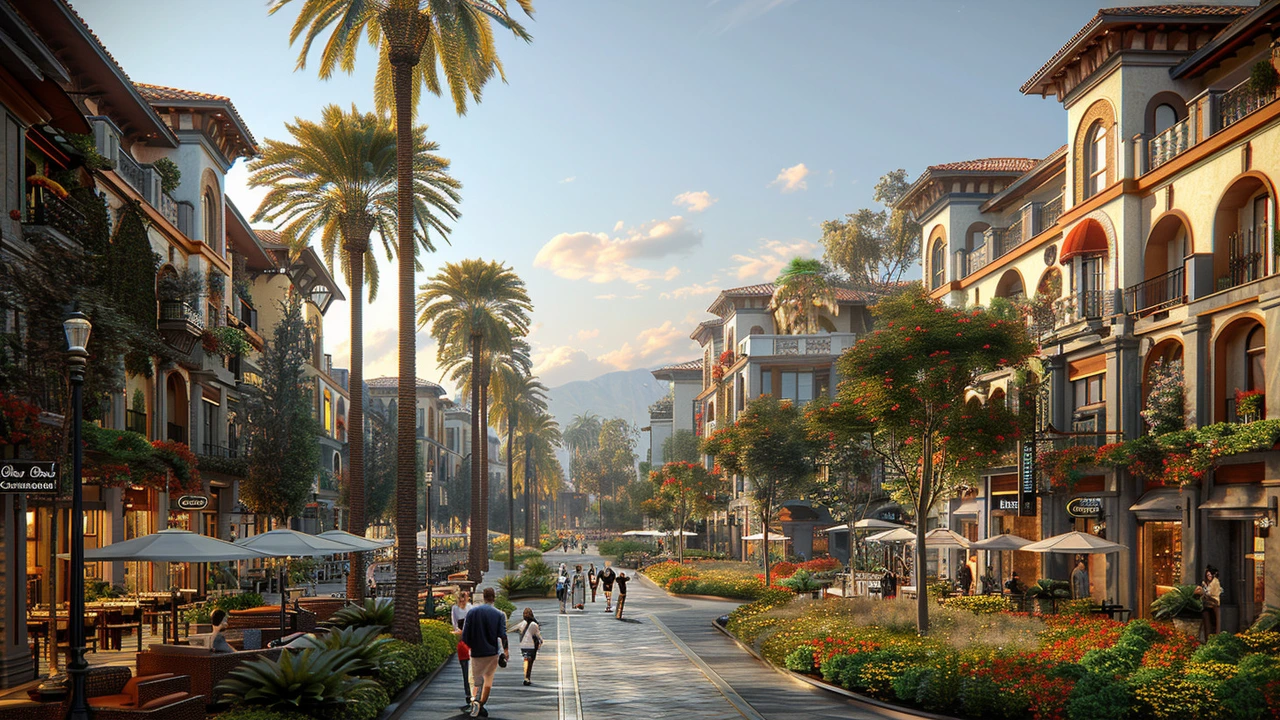
Why Designers Love It
Mediterranean Revival architecture has a special place in the hearts of designers for several reasons. To start, the timeless aesthetics offered by this style make it incredibly versatile for both residential and commercial spaces. The blend of rustic charm with elegant details appeals to a broad range of tastes, from those who appreciate traditional designs to those who seek modern interpretations with a classic twist.
One of the aspects designers particularly love is the use of natural materials. The emphasis on stone, terracotta, and wrought iron creates a warm and inviting atmosphere, which can transform any space into a haven of relaxation and inspiration. Additionally, the color palette, often featuring earthy tones, deep blues, and warm yellows, not only adds to the cozy feel but also reflects the natural surroundings, making a home feel connected to its environment.
The architectural features themselves are a playground for creativity. Arches, columns, and tiled roofs provide endless opportunities for unique expressions. These elements lend a distinct character that is both classic and adaptable. Given the trend toward green and sustainable architecture, Mediterranean Revival's focus on natural ventilation and light further supports environmentally conscious design, making it a favorite among eco-friendly architects.
Another appealing element is the seamless indoor-outdoor transition that this style facilitates. Courtyards, verandas, and expansive terraces encourage outdoor living, a concept that resonates with modern sensibilities. Today, more people crave a connection to nature, and Mediterranean Revival architecture fosters this connection through thoughtful design. As renowned architect Julia Morgan once said,
"Architecture should speak of its time and place but yearn for timelessness."This encapsulates why designers are drawn to Mediterranean Revival—it offers a canvas to create something enduring.
Nostalgia and Modern Appeal
While rooted in historical designs, Mediterranean Revival also carries a sense of nostalgia that resonates deeply. This style transports people to sunlit coasts and lush landscapes, invoking a sense of vacation living. Yet, its ability to blend traditional elements with contemporary comforts offers a modern appeal that draws both designers and homeowners. Practical considerations, such as the use of thick walls for insulation and strategically placed windows for natural light, further reinforce its suitability for a range of climates and settings.
Lastly, designers love the adaptability of Mediterranean Revival. Whether it's a small cottage or a luxurious villa, this architectural style can scale to various project sizes and requirements. The customizability extends to interior decor—antique furniture, vibrant tapestries, and intricate tile work can be effortlessly integrated to enhance the overall theme.
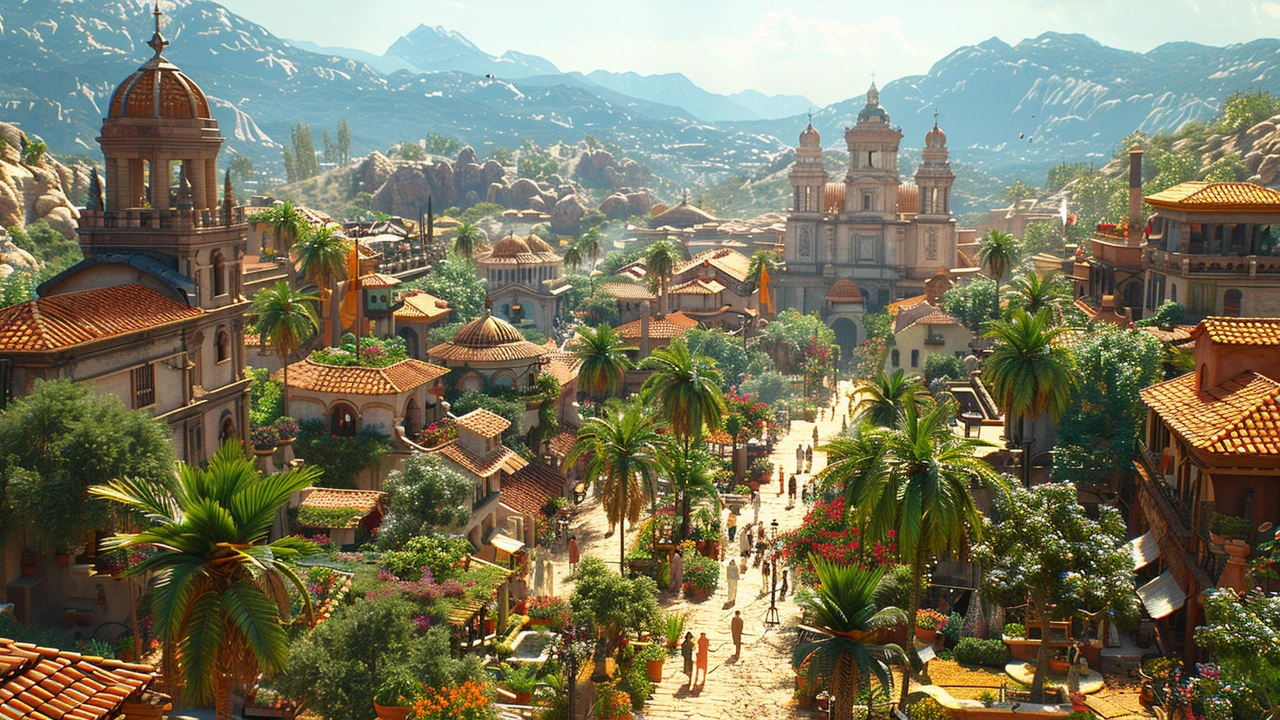
Tips for Incorporating Mediterranean Revival
Incorporating Mediterranean Revival style into your home is all about capturing the essence of sun-soaked coasts, vibrant textures, and timeless elegance. It starts with an emphasis on architectural elements and extends to the smallest decorative details. Here are some tips to help you infuse your space with Mediterranean charm.
1. Embrace Natural Materials
Mediterranean Revival homes often showcase a rich tapestry of natural materials like terracotta, stone, and wrought iron. These materials not only add authenticity but also create a warm and welcoming ambiance. Consider tiled floors or walls using traditional patterns to bring a piece of the Mediterranean right into your living room. Wrought iron chandeliers and railings can add a historical touch, anchoring the space in old-world tradition.
2. Use a Warm and Rich Color Palette
The Mediterranean aesthetic is famed for its warm color palette that mimics the surrounding landscape. Think earthy tones like terracotta, deep olives, sun-kissed yellows, and ocean blues. Colorful mosaics and hand-painted tiles can be used as a focal point in kitchens and bathrooms, instantly transporting you to a sun-drenched coastal villa. Walls painted in warm, creamy hues create the perfect canvas for displaying vibrant artwork and classic tapestries.
3. Add Arches and Curves
One of the most distinctive features of Mediterranean Revival architecture is the use of arches and curves. These elements can be gracefully added to doorways, windows, and even furniture. Arched entryways create a dramatic effect and add to the home’s historical character. Curved lines can soften the architecture and make the space more inviting.
"Arched openings are a hallmark of Mediterranean Revival homes, providing not just aesthetic appeal, but also a sense of flow between interior and exterior spaces," says architect Maria Sanchez.
4. Indoor-Outdoor Living
Mediterranean Revival architecture celebrates the harmony between indoor and outdoor spaces. Patios, balconies, and courtyards become extensions of the living area. Use rustic outdoor furniture, potted plants, and water features to create serene outdoor havens. Large glass doors can blur the boundary between the indoor and outdoor spaces, making it easier to enjoy the surrounding natural beauty. Historically, these features helped in surviving the harsh summer heat by providing shaded, cool retreats.
5. Incorporate Decorative Elements
No Mediterranean Revival home is complete without elaborately detailed decorations. Ornate tiles, colorful mosaics, and intricate ironwork add personality to the spaces. Stained glass windows can bring in light in rich, jewel tones, adding to the luxurious atmosphere. Think about small touches like hand-painted ceramics and classic fabrics that can be easily switched out to refresh the space.

